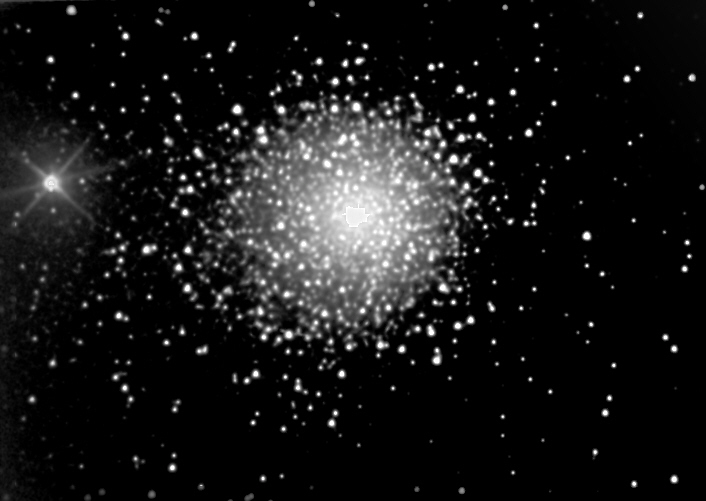

To enlarge or reduce the picture size, on a computer hold down the Ctrl key and, using a mouse, scroll in or out.
M 15, GLOBULAR CLUSTER on 2023-06-27
This photo was done in my backyard in Kyle, Texas through a 6-inch Sky-Watcher f/4 Telescope, on a Sky-Watcher EQ6-R mount, using a ZWO ASI533MC PRO color camera. 132 subs x 30 sec.
Messier 15, M 15, also named NGC 7078, is in the constellation of Pegasus 33,600 light-years from the Earth and 175 light-years in diameter. M 15 was the first globular cluster known to host a planetary nebula (the gaseous shell of a dying star). The nebula, Pease 1, was detected in 1928 by Francis G. Pease and is one of only four planetary nebulas known to exist within a globular cluster. The total luminosity of M 15 is 360,000 times that of the Sun. Messier 15 is one of the most densely packed globular clusters known in the Milky Way galaxy. Its core has undergone a contraction known as "core collapse" and it has a central density cusp with an enormous number of stars surrounding what may be a central black hole. The black hole thought to exist at the center of M15 is about 4,000 times the mass of our sun. The cluster is home to over 100,000 stars, and it contains a large number of variable stars (112), and pulsars (8), including one double neutron star system, M 15-C. Messier 15 is estimated to be about 12.5 billion years old. It is one of the oldest known globular clusters.
Previous Photo

OBJECT = M15
TELESCOPE = 17.5 inch f3.23
CAMERA = ST7-E
OBSERVER = Rusty Fletcher
LOCATION = Seguin Outdoor Learning Center
DATE (Yr-Mo-Dy) = 2004-08-15
TIME (UT) = 04:06:48
TOTAL EXPOSURE = 450 sec
IMAGES STACKED = 45